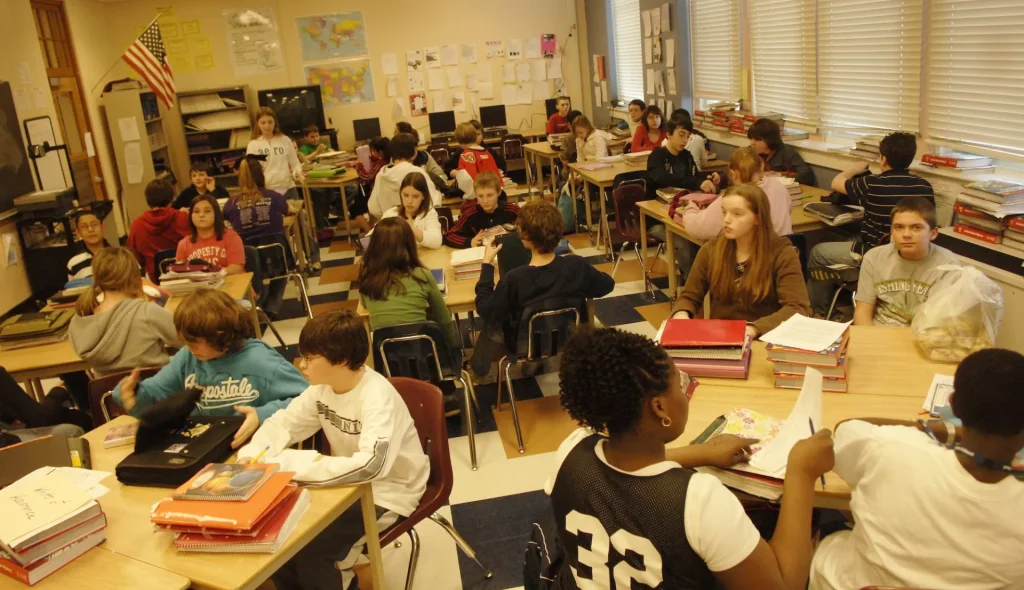JAKARTA, studyinca.ac.id – Hey folks, welcome back to my blog! Today, I’m getting real about a topic every teacher, parent, and well, honestly, every stressed-out student has strong opinions about: Class Size: Balancing Personalized Learning and School Resources. This isn’t just another theory piece. I’m gonna share stories from my own teaching days, the wild stuff I’ve seen, the mistakes I’ve made, and what I learned the hard way. Plus, let’s dig into the numbers and tips—because, honestly, who doesn’t want a smoother run in the classroom?
My First Big Class: Overwhelmed but Not Defeated

Let me take you back to my first year as a teacher. I walked into a room with 38 rowdy teenagers (yep, you read that right!). The school couldn’t shrink the class, and my dreams of giving everyone super personal attention quickly clashed with reality.
Within the first week, I realized that letting 10 kids fall behind while trying to help two superstars just wasn’t gonna cut it. I tried group work, one-on-ones during breaks, and even called parents in for support. That experience made me obsessed with the whole class size debate.
Personalized Learning: The Dream vs. The Real World
So what’s the deal with personalized learning anyway? In theory, it rocks—every kid gets their own path, goals, and feedback. Like Netflix, but for education! But get this: When your class size passes 30, customizing becomes a logistical nightmare. Imagine grading personalized assignments for 38 students… every week. Yikes.
When I had a smaller class—20 kids max—it was a game changer. I could tailor lessons, spot the quiet ones who needed extra help, and celebrate small wins. That’s the power of manageable class size. But let’s be real—schools often just don’t have enough budgets (or rooms, or teachers) to keep things that cozy.
How School Resources Shake Things Up
Here’s the part schools don’t like to admit: it comes down to resources. More teachers = smaller classes. More classrooms = less crowding. But, wages, books, and tech eat up budgets. I remember the sting of wanting to split my class but knowing there just weren’t enough staff.
Back in 2022, UNESCO said Indonesian public schools averaged 28-40 students per class. That’s above the OECD average of 21. Now, numbers like that mess with the whole personalized dream. The question becomes: How do you do more with less?
My Top Tips for Making It Work (Even with a Packed Class)
- Embrace Technology: Use Google Classroom, Kahoot!, or WhatsApp for shout-outs, quizzes, and feedback. Tech can amplify your reach—big time. Pro-tip: Assign self-paced activities online for the fast learners.
- Peer Tutoring: Pair up your advanced students with those needing help. It builds confidence and knowledge both ways. Plus, it’s a lifesaver when you’re stretched thin!
- Station Rotation: Divide your class into stations—some working reading, others on creative projects. While kids rotate, grab a few minutes for personal chats with each group. It’s my secret weapon to sneak in personalized touches.
- Grading Smarter, Not Harder: Instead of writing essays every week, try quick video responses or group projects where you can give chunked feedback. This cuts your workload and keeps things fresh for them too.
Lessons Learned: My Big ‘Oops’ Moments
I’ll admit, at one point, I tried to run class like an assembly line—cranking through material just to say we “did it all.” That totally backfired. Kids tuned out. Discipline issues spiked. My energy tanked. The hard lesson? When you’re outnumbered, you’ve gotta work smarter, not just harder.
Another mistake: thinking every student wants or needs the same thing. When I started letting them choose topics or project formats, engagement shot up—even in big classes. Turns out, a sprinkle of autonomy goes a long way.
What Student Voice Taught Me
A few years in, I started asking my students straight up: “How do you wanna learn?” (It was as awkward as it sounds at first.) But trusting them changed the game. Some begged for smaller study groups; others loved solo work with music. The biggest takeaway? There’s no one-size-fits-all—even in a big class. Listening can reveal gold nuggets of Knowledge.
Is Smaller Always Better? Maybe, Maybe Not…
Here’s an unpopular opinion: Sometimes, a slightly bigger class can actually vibe better. When the group is diverse, discussions get spicy, and peer mentoring happens naturally. But go too big, and students start falling through the cracks.
At the end of the day, balancing class size and school resources isn’t about chasing a magic number. It’s about making the most of what you’ve got—and pushing for better where you can. Personal tip: Be vocal (nicely) with your school leaders if your class is too jam-packed. Sharing data, stories, and solutions helps more than just venting.
Wrapping Up: The Only Rule is Flexibility
If there’s one thing this journey has taught me, it’s that teaching is a mad mix of art, science, and improvisation. Don’t get hung up on having the “perfect” class size (spoiler: it doesn’t exist for long). Focus on small wins, build community, and keep advocating for your students and yourself.
So, whether you’re juggling a class of 18 or 38, remember: It’s all about balance. And hey, if you have your own hacks for handling class size drama, drop them below! We’re all learning together, trust me. Til next time—keep hustling, keep helping, and keep it real!
Explore More Articles in the Knowledge Category: Knowledge
Also Read about Construction Oversight

